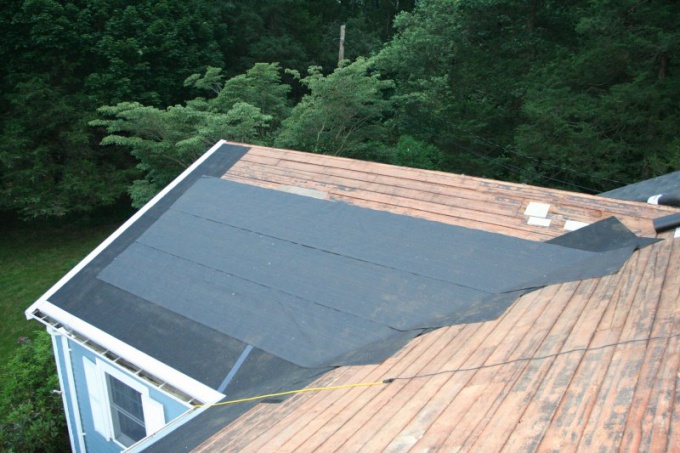You will need
- - bikrost;
- - bitumen primer;
- - propane burner.
Instruction
1
Prepare the surface, clean it from garbage. Remove burrs from protruding rebar and nails. Cement mortar seal all large holes and cracks. For sealing of small pits use bitumen mastic. To put bikrost should be at a temperature above +5° Celsius. If the ambient temperature is below this figure, installation should be carried out in a specially created "teplyaki".
2
For high-quality weld surface should be improved. To achieve maximum adhesion, to bind the dust and to fill the pores, Prime the surface with bitumen primer, or dilute bitumen petrol (1:3). After priming, allow the base to dry thoroughly and only then proceed for further work. If the roof slope is greater than 15%, press rolls parallel to the incline on the ramp slopes; if the slope is less than 15% perpendicular and parallel to the slope. Roll out the rolls bikrost over the whole surface and by using a roofing knife, make a cutting. After cutting the material again twist into coils.
3
Now proceed directly to the weld material. Put the roll in one of the corners. Stand so that the roll unfolded. To make it easier to deploy the coil, use a crowbar or other similar tool. Ignite the propane burner. Gradually expand the coil, melting the burner base. Heat the bottom layer, place the burner flowing movements to achieve uniformity in the melting of the lower layer.
4
The next roll set so that the layer bikrost lay down overlapping the previous not less than 0.1 m. This will allow you to protect and strengthen the joints and improve the quality of the flooring. Because the problem areas are the joints, laying of waterproofing materials suggest not to neglect the 10-theantimicrobial overlap and do not walk on microtu. Preferably in places overlap the roller to press one layer on top of another.



